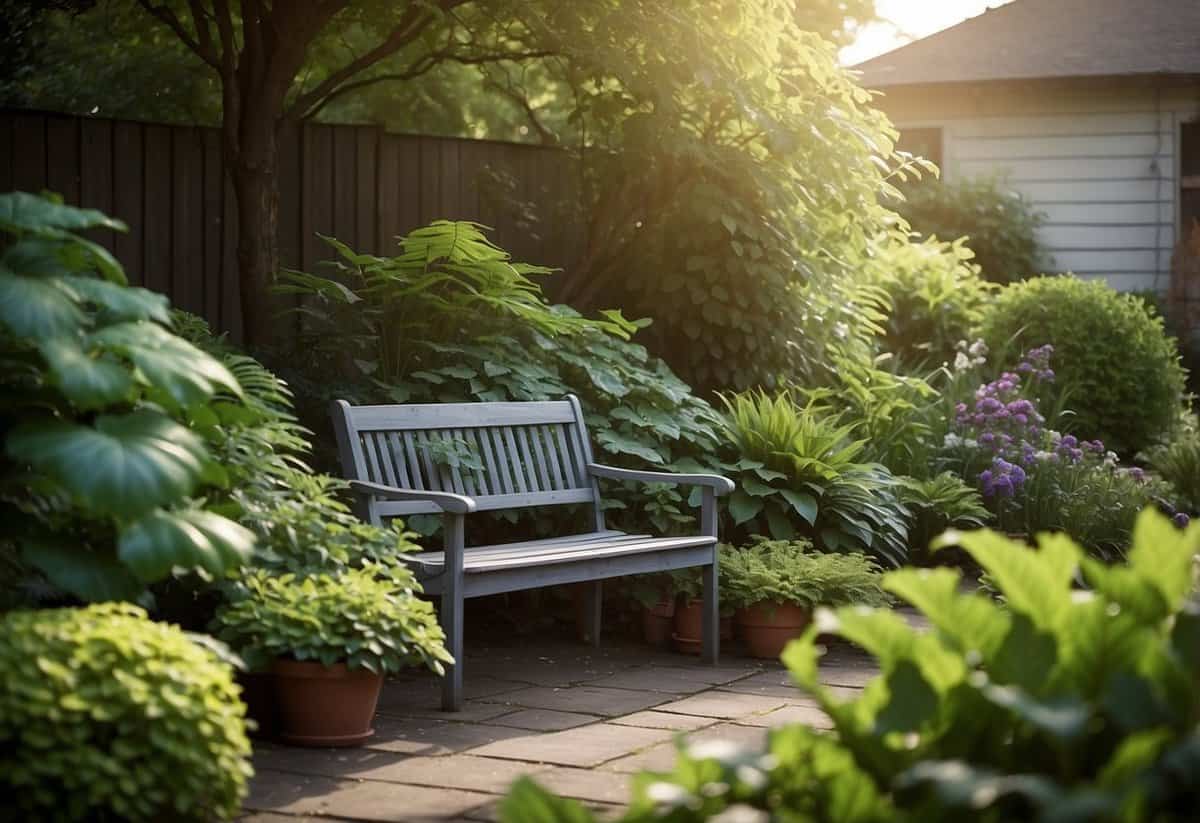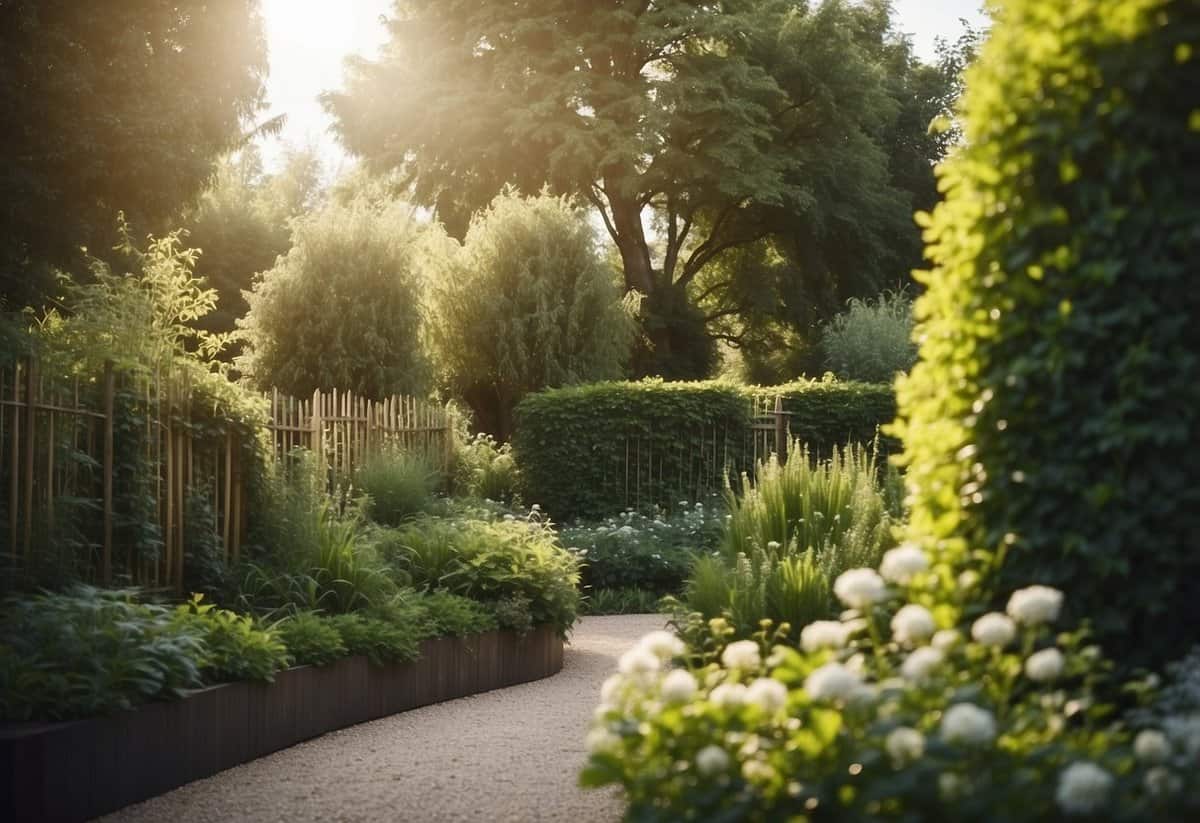Tips for North Facing Garden: Maximizing Sunlight and Plant Choices
Having a north-facing garden can seem challenging, but it also provides unique opportunities. Whether you’re dealing with deep shade or just a little less sunlight, there’s plenty you can do to create a beautiful space.

You’ll learn how to make the most of the light and choose the perfect plants for a thriving garden. With a few simple tips, your north-facing garden can be a pleasant and inviting part of your home.
1) Choose Shade-Tolerant Plants

When planning a north-facing garden, it’s crucial to select plants that thrive in the shade.
Consider growing Heucheras. These plants, also known as Coral Bells, offer colorful foliage and are perfect for adding visual interest.
New Guinea impatiens are another great option. These plants bloom beautifully even with less sunlight.
Albéric Barbier roses can add elegance to a shady garden, despite most roses needing more sun.
2) Use Reflective Mulch

Using reflective mulch is a great way to brighten up your north-facing garden. Start by removing any weeds from the bed.
Next, cover the area with silver polyethylene mulch. You can find this in rolls at most garden stores.
Secure the edges with soil, stakes, or rocks. Then, cut small holes in the mulch to plant your seeds or transplants. This method helps your plants get more light.
Reflective mulch also controls weeds and keeps the soil moist, giving your garden the boost it needs. For more details, visit Gardening Know How.
3) Prune Back Overhanging Branches

If branches from a neighbor’s tree hang over your yard, you can prune them.
Pruning helps increase sunlight to your garden, which is essential for plant growth.
Use clean and sharp tools, like a pruning saw, to avoid injuring the tree.
Always check where the branch will fall to ensure safety.
For more advice on handling overhanging branches, visit this guide.
4) Install Mirrors or Reflective Surfaces

Adding mirrors or reflective surfaces can brighten up your north-facing garden. Mirrors on garden walls can create the illusion of more space and bounce light into darker areas. You can also use glass panels or transparent screens as dividers to allow light to pass through.
Reflective surfaces, like metallic planters or light-colored stones, can also help. They reflect sunlight and make your garden feel more open and lively. This simple trick can make a big difference in the overall feel of your space.
5) Paint Walls and Fences Light Colors

Painting your garden walls and fences in light colors can make a huge difference.
Pale shades like white, light gray, or pastel colors can brighten up a north-facing garden.
Light colors reflect more light, making your garden feel more open and airy. You can find paints like Pale Jasmine from Cuprinol Garden Shades to achieve this effect.
Steer clear of dark shades as they can make the garden look smaller and more shadowy.
6) Group Plants by Light Needs

In a north-facing garden, it’s important to arrange your plants based on how much light they need.
Shade-loving plants should go in areas with the least sunlight. Hostas, ferns, and foxgloves are great choices for these spots.
Sun-loving plants can be placed where they’ll get more light, such as the edges of the garden. For example, try rambling roses.
This way, all your plants will be happy and healthy.
7) Use Containers for Flexibility

Containers give you a lot of options in a north-facing garden. You can move them around easily to catch the best sunlight.
Using containers helps you take advantage of sunnier spots in your yard, even if they’re small. Plus, if a plant isn’t thriving, you can just relocate it.
Make sure the containers have drainage holes to prevent waterlogging. Also, choose the right size for the plants, so they have enough room to grow properly.
8) Opt for Vertical Gardening

With limited sunlight, making the most of your space is essential. Vertical gardening lets you add more plants without taking up ground space.
Consider using trellises, hanging baskets, or wall-mounted planters. These options help you grow a variety of plants.
Vertical gardens can also save water, as they often require less than traditional gardens.
9) Use Pathways to Increase Light

Adding pathways can help brighten up a north-facing garden. Pathway lighting is key for this.
Use low-level lights to illuminate walkways. These guide your guests safely and add a warm glow.
Consider ground-level lights or recessed lighting along the edges for an elegant effect. This can help create the illusion of more light.
10) Install Solar Garden Lights

Solar garden lights are a great way to brighten up your north-facing garden.
To get the best results, make sure the solar panels receive enough sunlight. Place them where they can absorb sunlight for at least 6 hours each day, avoiding shadowy spots caused by trees or buildings (tips).
Position your lights along pathways, around flower beds, or near seating areas. Water the soil beforehand if it’s hard or dry, which makes installation easier (soil preparation).
Enjoy your beautifully lit garden every evening!
Understanding North Facing Gardens

North facing gardens often receive less direct sunlight and may require special attention to soil quality. Here’s what you need to know about the light conditions and soil quality to make your garden thrive.
Light Conditions
In a north-facing garden, the sunlight can be limited. The sun’s path is mainly in the southern sky, which means less direct light reaches these gardens. You may find that the far end of your garden gets the most sun, especially in the morning and evening.
To make the most of this, place shade-tolerant plants near the back of your garden. These plants can handle the lower light levels and still flourish. Additionally, using light-colored fences or paving stones can help reflect sunlight, making the area seem brighter. For example, you can lighten your boundaries by painting your fences a lighter color.
Soil Quality
Soil quality is another key factor. These gardens can sometimes have damp, heavy soil due to limited sunlight. It’s essential to improve drainage and enrich the soil.
Start by mixing organic matter like compost or well-rotted manure into your soil. This will improve its structure and provide necessary nutrients. Regularly checking soil moisture levels can help prevent waterlogging, which is common in shaded areas.
Consider using raised beds if drainage is a persistent issue. They improve soil conditions and keep your plants healthier. For specific guidance on plant choices, the Meadowlark Journal recommends assessing the shade types in your garden to select the best plants.
Best Plants For North Facing Gardens

Choosing the right plants can make your north-facing garden a beautiful space. Shade-loving plants thrive here, while evergreens keep it looking lively all year round.
Shade-Loving Plants
Shade-loving plants are great for a north-facing garden because they thrive without much direct sunlight. Camellias are perfect, boasting rose-like flowers and glossy leaves. They bloom from fall to spring, adding color when few other plants do. Learn more about Camellias for north-facing gardens.
The Albéric Barbier Rose also performs well in the shade. This rose variety provides a stunning display despite low light conditions. Read more about the Albéric Barbier Rose.
Hydrangea Petiolaris is another good option. This climbing hydrangea thrives in full shade, making it ideal for the back wall of your home. More details can be found here.
Evergreen Options
Evergreens keep your garden looking vibrant throughout the year. They don’t lose their leaves, providing structure and interest even in winter.
Japanese honeysuckle is a versatile evergreen. It prefers partial shade and can tolerate drought conditions. It also has edible flowers but be careful as large quantities can be harmful. Check out more on Japanese honeysuckle.
Boxwood is another excellent evergreen. It’s well-known for its dense, green foliage and can be shaped easily. This plant provides a classic look and requires minimal maintenance.
For a bold option, consider Holly. Its dark green leaves and bright red berries add a festive touch, especially during the colder months.
Maximizing Space and Layout

Making the most of a north-facing garden requires smart designs and layouts. Utilizing vertical space and carefully planning plant placement can help you create a lush, functional garden.
Vertical Gardening
Vertical gardening is essential for small north-facing spaces. You can install trellises or wall-mounted planters to grow climbing plants like ivy or jasmine. These plants thrive in shaded conditions and add greenery without hogging ground space.
Use shelves and tall plant stands to add layers of plants. This tiered approach allows more plants to get light and airflow. Hanging baskets are also great for small vegetables and flowers, giving you more planting surface without taking up your walking area.
Vertical gardening is not just for flowers. You can grow vegetables like peas, beans, and even cucumbers vertically. Choose lightweight containers to hang on walls or fences. This style not only saves space but also creates a more organized look in your garden.
Optimal Plant Arrangement
Arranging plants properly is crucial in a north-facing garden. Group shade-loving plants like hostas and ferns along the shadier sides. Place more sun-tolerant plants at the back of the garden where the sun is strongest.
Use furniture strategically. Place seating areas at the sunnier spots to maximize light exposure. This also helps keep the space practical and inviting. Smaller paths can lead to these cozy spots, making your garden look bigger.
Adding mirrors along garden walls can also amplify light and make the garden feel larger. You can use different heights and levels for your plants to create depth and visual interest. Think about tall shrubs in the back and shorter plants in the front. This will make your garden seem layered and vibrant.







